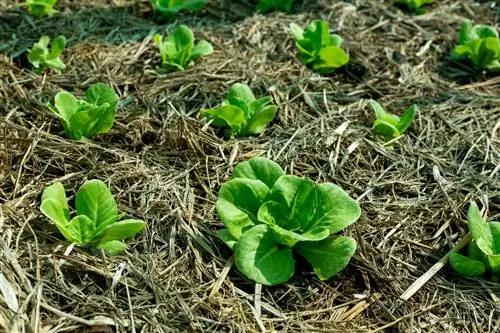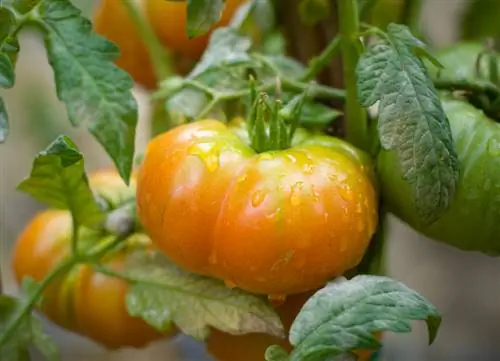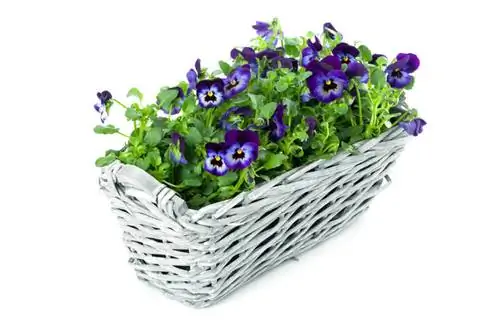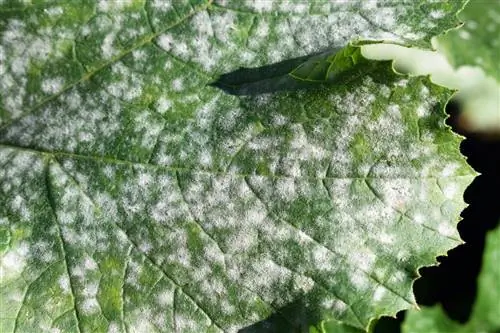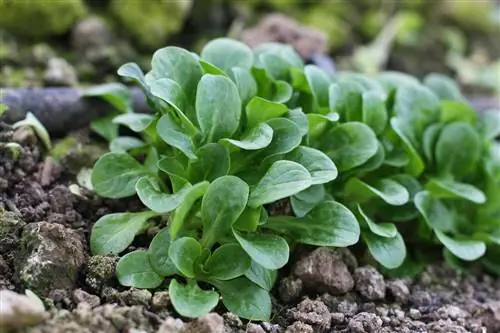- Author admin [email protected].
- Public 2024-01-05 20:48.
- Last modified 2025-01-23 11:22.
Lettuce is one of the most uncomplicated vegetables for beginners in the vegetable garden. If you sow regularly, you can harvest fresh lettuce well into autumn. However, growing in late summer can cause problems with mildew.
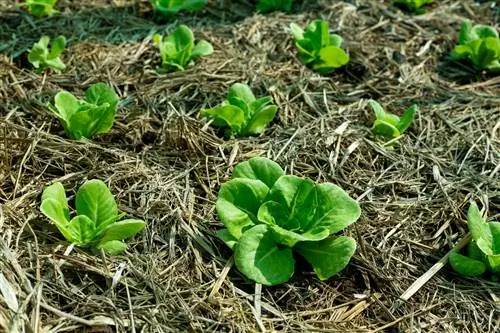
How do I recognize powdery mildew on lettuce?
Powdery mildew can be recognized by a white, mealy coating on the surface of the leaves. In downy mildew there are yellow-brown spots on the top of the leaves. A grayish fungal lawn can be seen on the underside of the leaf.
How can I combat powdery mildew on lettuce?
You can effectively combat powdery mildew with a home remedy. To do this, use milk or a mixture of baking soda and rapeseed oil for piping. If you are infected with downy mildew, you should first remove the affected lettuce plants from the bed. Then treat the remaining salads with a garlic decoction. At the same time, water the plants with field horsetail tea.
How can I prevent downy mildew on lettuce?
Taking important points into account you can prevent the disease:
- no fertilizer containing nitrogen
- Field horsetail tea as an addition to irrigation water or as a spray solution
- Mulch the soil thickly with quick-drying material such as straw
- Observe plant spacing so that the leaves dry quickly after rain
- Do not water on the leaves, but on the soil
Since downy mildew is difficult to control, prevention plays a special role.
On which salads does powdery mildew tend to occur?
Downy mildew affectsall types of lettuce in the genus LactucaThese species include lettuce and iceberg lettuce as well as lettuce and romaine lettuce. The disease is caused by the fungus Bremia lactucae. The fungus occurs mainly in damp weather. That's why it mainly appears when the plants are grown in late summer or autumn. Powdery mildew is rarely found on lettuce plants. The disease only occurs in late varieties if there was a very dry early autumn.
Tip
Downy mildew despite resistant seeds
The mildew fungus Bremia lactucae is very changeable and forms a variety of races. This makes it difficult to breed resistant varieties. This can lead to an infection with downy mildew, even with resistant seeds.

